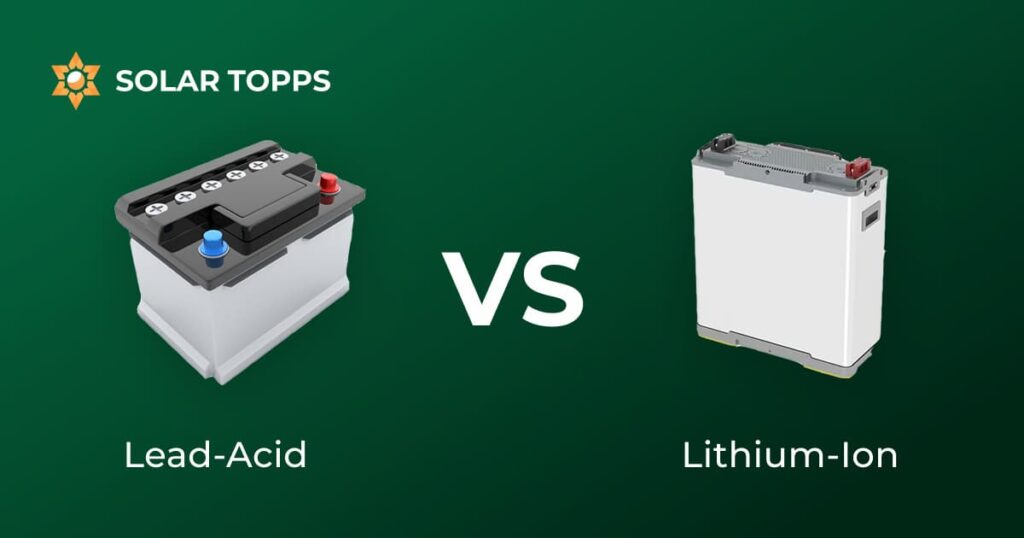How to Size Batteries for Solar Energy Systems in AZ
How to Size Batteries for Solar Energy Systems in Arizona
Updated: August 27, 2025
Adding a solar battery to your system helps you use solar energy better. It gives you reliable power at night, on cloudy days, or during outages. Solar batteries ensure that your renewable energy is stored for use when you need it most. At Solar Topps, we focus on helping our customers choose the right size and type of battery to maximize system performance and long-term energy independence.
Visit us at Solar Topps. We serve the entire state of Arizona, but we also specialize in areas like Scottsdale, Paradise Valley, Sun City, Chandler, Mesa, Gilbert, Queen Creek, Fountain Hills, and many more!
If you have any questions, please Contact Us. You can also fill out a Residential or Commercial Quote.
Understanding Solar Battery Sizing
Choosing the right solar battery size is fundamental to ensuring your energy needs are met consistently. Proper sizing prevents energy shortages during outages and maximizes the utility of energy produced by your solar panels.
- Battery Capacity Role: Battery capacity measures how much energy a battery can store for later use. For example, if your home consumes 30 kWh daily, you’ll need a battery with at least this capacity to cover daily energy consumption without sunlight. Planning for emergencies? Aim for a battery with 1.5 to 2 times your daily usage.
- Why Sizing Matters: Improperly sized batteries can result in inefficiencies. Too small, and your battery may not store enough energy to meet your needs; too large, and you may overinvest in capacity you rarely use.
Factors Influencing Solar Battery Size
Several factors determine the optimal size of a solar battery for your system:
- Daily Energy Consumption: Evaluate your household’s electricity usage from utility bills. Knowing your daily average helps estimate battery size. For example, a household that uses 20 kWh each day may need a 25 kWh battery. This battery can help cover losses and peak demands.
- Solar Panel Production: Analyze how much energy your solar panels generate annually to inform battery capacity. Metrics from past production performance guide sizing decisions.
- Peak Usage Patterns: Homes that use more power in the evening or charge electric vehicles may need batteries. These batteries should handle higher outputs during those times. For example, running an air conditioner (2,000 watts) and a refrigerator (1,500 watts) simultaneously requires a battery system managing at least 3.5 kW.
- Backup Power Needs: For reliable energy during outages, consider batteries sized to store multiple days’ energy usage. A household consuming 30 kWh daily might need a 90 kWh capacity to cover three days of outages.
- System Losses: Account for energy losses in storage and conversion, typically 10-20%. Adding this buffer ensures you have enough usable energy to meet your needs.
Calculating Your Energy Needs in Arizona
Accurate battery sizing starts with understanding your energy consumption and peak load requirements.
- Daily Energy Consumption: List all appliances and their wattage. Multiply each by hours of daily use. For instance, a refrigerator (150 watts) running 24 hours consumes 3.6 kWh daily. Add the usage of all devices for total consumption.
- Peak Load Requirements: Identify high-wattage appliances and their simultaneous use. For example, running a washing machine (2,000 watts) and electric heater (1,500 watts) together requires a 3.5 kW battery system to handle the load effectively.
What Size Solar Battery do I need?
To determine the appropriate size of a solar battery, consider factors such as your total energy consumption, peak load requirements, and desired backup duration. Begin by calculating your daily energy usage in kilowatt-hours (kWh). Next, assess how many hours of backup power you need during outages or periods of low solar production. For instance, an Arizona household consuming 10 kWh per day and requiring 12 hours of backup would need a battery system capable of storing at least 5 kWh. Also, consider efficiency losses. Most batteries work at about 85-95% efficiency. Keep in mind any future increases in energy needs. Finally, think about whether your system will work off-grid, either partially or fully. This choice can affect how much battery capacity you need.
Consider the Lifespan of the Solar Battery
When evaluating battery systems, it is also crucial to consider their lifespan and maintenance requirements. Most modern lithium-ion batteries offer a lifespan of 10 to 15 years, but this can vary based on usage patterns, environmental conditions, and the quality of the battery itself. Routine maintenance and monitoring can help ensure optimal performance and extend the battery’s operational life. Additionally, the warranty provided by manufacturers is an essential factor; warranties typically cover a specific number of cycles or a set period, offering assurance of product reliability over time.
The Battery’s Ability to Handle Peak Load Times
Another important aspect to examine is the battery’s ability to handle peak loads. Batteries with a high discharge rate can supply power for energy-intensive appliances or sudden demand spikes more effectively. Choosing a system with sufficient power output ensures seamless operation and prevents disruption during periods of high usage. By thoroughly assessing these factors, Arizona homeowners can select a battery system that aligns with their energy needs and supports the long-term efficiency of their solar infrastructure.
Types of Solar Batteries: Pros and Cons
The type of solar battery impacts system efficiency, cost, and maintenance. Here’s a breakdown of the most common options:
Lithium-Ion Batteries:
- High Efficiency and Longevity: Lithium-ion batteries provide 80-90% depth of discharge (DoD) and last 10-15 years.
- Low Maintenance: Minimal upkeep ensures these batteries remain reliable with little intervention.
- Lightweight and Compact: Their design simplifies installation compared to heavier alternatives.
- Cost: Although more expensive upfront, their efficiency and longevity often make them cost-effective long-term. For instance, a home consuming 4 kWh daily might choose a lithium-ion battery with 6 kWh capacity to account for cloudy days.
Lead-Acid Batteries:
- Affordable Upfront: Lead-Acid batteries are cheaper at first. However, they have lower efficiency and a shorter lifespan. They last about 3-5 years with a depth of discharge (DoD) of 50-60%.
- Higher Maintenance Needs: Regular fluid checks and maintenance are required.
- Costly Over Time: Replacements add to long-term expenses, especially for high-capacity systems. To meet the same needs as a lithium-ion system, lead-acid batteries often require double the capacity.
How to Calculate Solar Battery Size for an Arizona Home
To find the right size for a solar battery, think about your home’s energy use. Also, consider how long you want backup power and the battery’s depth of discharge (DoD). Start by finding out how much energy you use each day in kilowatt-hours (kWh). You can usually find this on your electricity bill. Multiply this value by the number of days you want the battery to provide power without additional charging, often referred to as the autonomy period. Finally, adjust for the battery’s DoD to ensure longevity and efficiency. For example, if you use 10 kWh of energy each day, you need two days of backup. If the battery has a DoD of 80%, the calculation would be:
Battery Size (kWh) = Daily Usage (kWh) × Autonomy Period (days) ÷ DoD Battery Size (kWh) = 10 × 2 ÷ 0.8 = 25 kWh
This calculation will provide you with the required battery size to meet your energy needs while maintaining optimal performance.
Understanding Energy Consumption in Arizona
To calculate the correct battery size for an Arizona home, it is essential to first analyze the household’s average energy consumption. Arizona homes often experience higher energy usage due to air conditioning demands during the summer months. Begin by reviewing your utility bills to determine the daily kWh usage and take into account seasonal variations. Focus on identifying the maximum daily usage to ensure your backup system can handle peak demand.
Accounting for Sunlight and Autonomy Needs
The next step involves calculating the autonomy period and factoring in Arizona’s sunlight conditions. Given the state’s abundant sunshine, solar panels often generate significant energy, but it is important to prepare for cloudy days or night usage. Establish the length of the autonomy period you require, typically ranging from one to three days, and use it along with your energy consumption data to determine the total battery capacity needed. This approach ensures your battery system can sustain reliable performance even during extended periods of limited solar generation.
Sizing Recommendations for Different Scenarios
- Off-Grid Systems: These require larger batteries to meet all energy needs independently. A home using 5 kWh daily may need a 7.5–10 kWh capacity to account for cloudy days and energy losses.
- Grid-Tied Systems with Backup: For homes connected to the grid, batteries can be smaller. A system storing 1.5–3 times daily usage, such as a 6–12 kWh battery for a household consuming 4 kWh daily, provides sufficient backup during outages.
Solar Battery Installation and Maintenance with Solar Topps
Solar Topps ensures expert installation and ongoing maintenance for every system:
- Professional Installation: Our in-house technicians handle every step, ensuring components work seamlessly together. From permits to safety inspections, we take care of the details.
- Ongoing Maintenance: Regular inspections, cleaning, and software updates help maximize battery lifespan. Scheduled checkups ensure optimal performance.
Maximizing Your Solar Investment
Selecting the right battery is crucial for making the most of your solar system investment. By understanding energy needs, evaluating peak usage, and choosing reliable technology, you’ll enjoy uninterrupted, cost-effective energy for years to come.
At Solar Topps, we’re committed to helping you achieve energy independence with tailored solutions and expert support. Contact us today to find the perfect battery system for your home or business and maximize the benefits of clean, renewable solar energy. We are based in Phoenix, AZ but we service the entire state of Arizona. These Arizona cities include Tucson, Buckeye, Scottsdale, Paradise Valley, Fountain Hills and many more!













